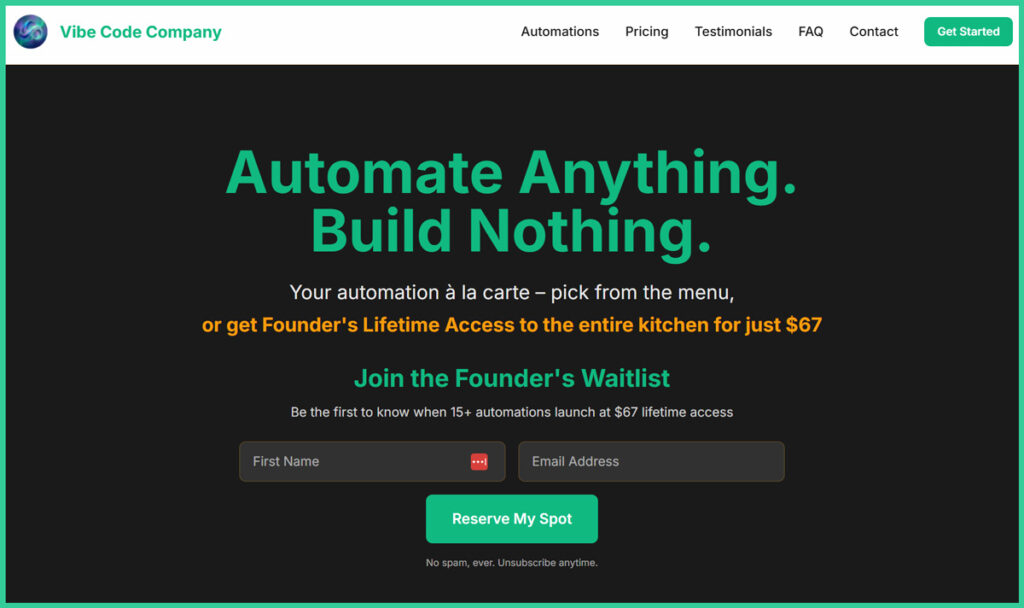First Let’s Answer: What are the key takeaways from the Google Helpful Content Update?
Page Contents
- First Let’s Answer: What are the key takeaways from the Google Helpful Content Update?
- What are the useful content suggestions to follow into the future?
- Write Concise Content
- Building Brand Authority and Trust Through Content Marketing
- Here’s an example from my own author biography:
- Conduct Keyword Research to Identify SERP Feature Opportunities
- Optimize Assets for Specific SERP Features
- Implement Structured Data Markup
- Analyze Performance and Iteratively Improve
- Diversify Asset Types
- Promote Assets
- Proper SEO Technique Using Listicles and Q&A Content
- On-Page SEO: Optimizing Your Website for Search Engines
- The Rising Importance of User-Generated Content for SEO
- How to Leverage UGC to Improve SEO
- Consistently Creating High-Quality Content
- I Wrote This Article Based On Some Of The Information In The Following Video By Charles Floate – Professional SEO Expert.
- Staying Ahead of Google Algorithm Changes with Content Pivots
- Questions & Answers Summary:
- What were the key effects of the Google Helpful Content Update?
- How can I make my content more helpful for users?
- How can I build brand authority and trust through content?
- What kinds of assets should I create to optimize for SERP features?
- How can listicles and Q&A content improve SEO?
- What are some key on-page optimization factors?
- Why is user-generated content important for SEO?
- How can I consistently create high-quality content?
- How can I stay ahead of Google algorithm changes?
- Why is it important to have consistently high-quality content across my site?
- What are some best practices for optimizing old content?
- How can I align my content with Google’s “helpful” focus?
- Here’s a list of resources:
User Generated Content Sites Benefited
- User generated content (UGC) sites like Quora, Reddit, and forum sites saw significant increases in traffic with Google Helpful Content Update
- VerticalScope, a company that owns many forum and community sites, saw traffic surges across its portfolio of sites. This indicates the update rewarded UGC and community content.
Short, Direct Answers Performed Better
- Shorter, more direct answers tended to perform better in search results. Long-form content saw declines.
- Listicle-style content also matched the new intent for short answers.
Homepages Needed to Establish Brand
- Sites without homepages that built out their brand entity performed worse. Homepages that were keyword-focused or simply displayed blog posts declined.
Multiple Pages from One Site Now Rank
- Google changed how it handles duplicate content, allowing multiple pages from the same site to rank for similar keywords without cannibalization. This benefited sites like forums.
Heavy Ads Sites Were Penalized
- Sites with excessive ads above the fold saw significant drops. This was a major target of the update.
Site-Wide Effects
- The effects were site-wide once a site was classified as having too much unhelpful content. Both high and low quality pages dropped.
SERP Features Moved Up
- Google search features like shopping, site links, and video boxes moved up higher in the search results. Matching these features became more important.
SERP Intent Changed
- Google changed the predetermined intent for many searches from informational to more commercial. More buying keywords saw ecommerce sites rank higher.
What are the useful content suggestions to follow into the future?
Write Concise Content
Clear, concise writing helps communicate ideas effectively. With so much information competing for people’s attention today, brevity and clarity are more important than ever. Here are some tips for writing concisely:
Use Short Sentences and Paragraphs
- Short sentences are easier to read and understand. Aim for 1-2 sentences per paragraph on average.
- Break up long blocks of text. Readers lose focus with big chunks of text.
Omit Unnecessary Words
- Remove filler words like “really”, “very”, “basically”.
- Cut redundant phrases. For example, “free gift” can be shortened to “gift”.
Use Active Voice
Active voice emphasizes the doer of the action. It’s often more concise than passive voice.
- Active voice: The writer crafted a concise article.
- Passive voice: A concise article was crafted by the writer.
Avoid Jargon and Technical Terms
Simplify language for a general audience. Spell out acronyms on first use.
Use Lists and Headings
Break up sections with numbered or bulleted lists when possible. Use markdown headings to organize topics.
<H1> Main Topic
<H2> Subtopic 1
<H3> Point 1
<H3>Point 2
<H2> Subtopic 2
<H3>Etc.
Highlight Key Points
Bold or italicize important keywords, phrases, or statistics for emphasis.
Include Relevant Visuals
Pictures, charts, or diagrams can convey information visually. Use markdown image syntax: 
Proofread
Read your draft aloud. Remove redundant words and tighten sentences. Aim to strengthen the clarity and impact of each sentence.
Writing concisely takes more time and effort, but the payoff is worth it. Your readers will appreciate content that is clear, focused, and respects their time. With practice, you can learn to communicate ideas more effectively through brevity and simplicity.
Building Brand Authority and Trust Through Content Marketing
Content marketing involves creating and sharing valuable, relevant, and consistent content to attract and retain a clearly defined audience, ultimately driving profitable customer action. By demonstrating expertise through content, brands can build authority, trust, and increase sales.
The importance of brand authority
Brand authority refers to a brand’s credibility and influence in the marketplace. It establishes a brand as a trusted leader and advisor in its industry. Brand authority leads to:
- Increased trust and loyalty – Customers are more likely to trust and remain loyal to brands viewed as authoritative.
- Improved brand visibility – Authoritative brands attract more opportunities like media mentions, partnerships, and word-of-mouth advocacy.
- Higher conversions – Customers prefer purchasing from brands they trust and perceive as experts.
Ways content builds brand authority
Content marketing allows brands to build authority by:
- Showcasing expertise – Educational content highlights a brand’s skills, knowledge, and capabilities.
- Providing valuable insights – Content that informs or helps the audience establishes the brand as a reliable resource.
- Addressing pain points – Content that solves problems demonstrates that the brand understands customer needs.
- Consistent messaging – Maintaining a consistent brand voice across channels reinforces authority.
- Storytelling – Stories that engage audiences on an emotional level build affinity and trust.
Steps to build authority through content
- Audit brand perception – Research how your brand is currently perceived online to identify gaps and opportunities.
- Understand your audience – Study your audience personas to determine their pain points, challenges, and questions.
- Create an editorial calendar – Plan content topics and themes that map to audience needs and brand objectives.
- Produce high-quality content – Create well-researched, insightful content that establishes expertise.
- Promote and distribute – Share content on owned channels and pitch to industry publications for added visibility.
- Measure and optimize – Analyze performance to refine content and distribution strategies.
| Content Type | Example Topics |
| Blog Posts | Industry trends, guides, how-tos |
| eBooks / White Papers | Research studies, in-depth guides |
| Webinars / Videos | Expert panel discussions, tutorials |
| Case Studies | Client success stories, ROI examples |
By consistently producing high-quality, valuable content optimized for search, brands can build authority and trust to boost engagement, leads, and sales. The key is understanding your audience and providing the information they seek.
- Hello, my name is Eric Schultz. I learned web design by building for my own brick and mortar businesses back in the 1990’s. I built a professional sports photography website and a finance company website. Through ads and Search engine optimization in the 2000’s, both were very successful.
- I like design and digital art, so I have always been involved in helping other business owners build a strong online presence. I am grateful to be providing a service I love. Currently offering website design, graphic arts, small business advertising and SEO.
- With over 30 years of experience in online marketing, I have helped numerous small businesses create a website and marketing plans. This has led to their current success and a few of these websites are represented here: https://LivingstonBarandGrille.com https://pfs-pros.com and https://RockyMountainDesign.com
- These are a few of the businesses I have helped and I hope to provide helpful content, design and consulting for you too! Let’s proceed with the article.
Conduct Keyword Research to Identify SERP Feature Opportunities
- Use keyword research tools to find keywords that trigger specific SERP features like video carousels, image packs, featured snippets, etc. Focus on informational, “how-to” style queries.
Optimize Assets for Specific SERP Features
- For video carousels, optimize YouTube videos with relevant titles, descriptions, tags, captions, and VideoObject schema markup.
- For image packs, use descriptive file names, alt text, image sitemaps, proper image sizing and compression.
- For featured snippets, ensure content answers the user query clearly and comprehensively.
Implement Structured Data Markup
- Use schema markup like VideoObject, ImageObject, HowTo, FAQPage etc. to help search engines understand your assets and display them appropriately.
Analyze Performance and Iteratively Improve
- Use tracking tools to see which assets are triggering SERP features. Identify opportunities to create new, relevant assets targeting uncovered keywords. Continuously optimize existing assets based on performance.
Diversify Asset Types
- Produce a variety of visual assets like infographics, animations, and interactive content in addition to standard images and videos. Different asset types can attract clicks in different SERP features.
Promote Assets
- Encourage links, embeds, and social shares of assets to boost visibility. Asset promotion can improve chances of ranking for related SERP features.

Proper SEO Technique Using Listicles and Q&A Content
Search engine optimization (SEO) is crucial for driving traffic to your website. Two effective ways to optimize content for SEO are using listicle formats and forums/Q&A styles.
Use Listicles to Engage Readers
Listicles present information in easy-to-scan bullet points instead of long paragraphs. This format appeals to modern readers who want bite-sized content. To write an SEO-friendly listicle:
- Choose a topic that lends itself to a list format, like “10 Ways to Improve Website Speed” or “5 Must-Have SEO Tools.”
- Optimize each section with target keywords and links to internal content. For example, in a listicle on link building, link relevant posts from your blog.
- Format each section with a heading (H2) tag and 1-2 sentences explaining the list item. Use bullet points for easy scanning.
- Include odd numbered lists, like 7 or 9 items. Search engines favor these over round numbers.
- Add images, infographics and videos to make the content more visually appealing.
- End with a call to action to convert readers. For example, invite them to download an ebook on the topic.
Leverage Forums and Q&A Sites
Active participation in relevant forums and Q&A sites like Quora and Reddit provides multiple SEO benefits:
- Build backlinks by including links to your content in high quality answers. Make sure your links are relevant and add value.
- Demonstrate expertise by providing thoughtful answers to common questions in your niche. This establishes trust and authority.
- Monitor forums and Q&A sites to find FAQ ideas and content gaps to create content around.
- Promote your new content by linking to your articles in forum discussions and Q&A threads.
- Interact with your audience and build relationships with influencers. Comment on others’ posts too.
Why This Works
Listicles and Q&A content match Google’s desired formats. The search engine wants to surface content that directly answers user intent.
Conversational Q&A threads provide multiple perspectives around a topic, feeding Google’s AI. Listicles serve information in easily digestible formats.
Leveraging these content types improves user experience and signals to Google your pages satisfy searcher intent. The end result is higher rankings and more organic traffic.
On-Page SEO: Optimizing Your Website for Search Engines
On-page SEO refers to optimizations made directly on a webpage to improve its rankings in search engines like Google. While off-page SEO focuses on building links and earning mentions, on-page SEO is entirely under your control.
By optimizing on-page elements, you can better communicate the topic and value of each page to both search engine bots and human visitors.
Here are some key on-page factors to focus on:
Use Target Keywords Naturally
- Research target keywords using tools like Google Keyword Planner
- Incorporate keywords naturally into page content, titles, headings, image names, etc.
- Avoid over-optimization with exact-match keyword stuffing
Craft Descriptive Titles
- Titles appear in search results, so make them enticing yet descriptive
- Keep titles under 60 characters, with keywords toward the beginning
Structure Content with Headings
- Use heading tags (<h1>, <h2>, etc.) to outline content
- Place important keywords in headings when possible
Optimize Images
- Give images descriptive alt text and file names
- Compress images for faster load times
- Use lazy loading to delay image loading until needed
Improve Site Architecture
- Use simple, logical, and SEO-friendly URLs
- Allow easy site navigation with menus and internal links
- Maintain a healthy link structure avoiding broken links
Check Page Speed
- Faster sites rank better, so test page speed with Google PageSpeed Insights

- Optimize images, enable caching, and minify CSS/JS to improve speed
| On-Page SEO Factor | Best Practices |
| Keywords | Incorporate keywords naturally into content |
| Titles | Keep titles under 60 chars using keywords up front |
| Headings | Outline content in heading tags with keywords |
| Images | Optimize with alt text, descriptive names, compression |
| Site Architecture | Simple URLs, good navigation and internal links |
| Page Speed | Test with PageSpeed Insights, optimize images, enable caching |
By focusing on these key on-page factors, you can better optimize each page for search engines while also improving the experience for visitors. Start with high-priority pages like your homepage, category pages, and other pages targeting critical keywords.
The Rising Importance of User-Generated Content for SEO
User-generated content (UGC) refers to any form of content created by users and consumers, such as reviews, comments, forum posts, social media content, etc. UGC has become increasingly important for brands and businesses to leverage as part of their digital marketing and SEO strategies. Here are some of the key reasons why:
- Improved engagement and traffic – UGC helps drive more user engagement on your site in the form of comments, shares, etc. This increased dwell time signals to search engines that your content is valuable. Higher engagement also leads to lower bounce rates and more pages viewed per visit, further boosting your SEO.
- Fresh and updated content – Search engines favor websites with frequently updated, unique content. Curating and featuring UGC is an easy way to keep your site content fresh without much effort from your end.
- Higher authority and trust – UGC adds a layer of authenticity and credibility to your content that company-created content simply cannot match. Reviews, ratings and social proof establish authority and trust, which search engines reward.
- Long-tail keyword optimization – UGC often contains specific long-tail keywords that users naturally use to describe products or services. Identifying these can help you target more niche searches.
- Improved social media engagement – Encouraging UGC creation on social media through campaigns, contests etc. can significantly boost your engagement and reach. This indirectly has SEO benefits.
How to Leverage UGC to Improve SEO
Here are some tips on how you can effectively leverage UGC to boost your SEO:
- Customer reviews and testimonials – Feature genuine customer reviews and testimonials prominently on product/service pages. Ensure they are structured with keywords seamlessly integrated.
- Forums and communities – Build an online community for your brand by starting forums and groups. This encourages discussions and UGC creation.
- Social media contests – Run creative contests on social media that encourage users to generate branded content and use specific hashtags.
- Visual UGC – Curate and display visual UGC like user-generated images and videos to break up text-heavy pages.
- Case studies – Publish case studies and success stories around your happy customers after taking their consent.
- FAQ schemas – Use UGC in the form of customer questions to build FAQ schema markup on pages. This can generate rich snippets.
- Influencer content – Collaborate with influencers in your niche to create UGC like reviews and tutorials featuring your brand.
Pro tip: Always ensure you have permission before reusing any UGC. Give due credit to the creator and link back to the original source.
UGC allows brands to tap into the power of social proof and authenticity. Integrating UGC effectively can significantly boost your SEO performance and rankings. Start exploring options to incorporate more UGC into your marketing strategy.
Consistently Creating High-Quality Content
As per the provided context, Google updates its algorithms holistically based on overall content quality, not just individual pages. So it’s critical for websites to consistently produce helpful, high-quality content across the entire site in order to rank well in search results.
When creating content, the focus should always be on the user first rather than search engine rankings. The content should aim to be comprehensive, accurate, educational and as useful as possible for the reader.
Here are some best practices for consistently creating high-quality content:
- Conduct keyword research to identify topics and questions that your audience is searching for. Base your content around providing the best possible answer to those searches.
- Produce evergreen content that will retain its value over time. Avoid time-sensitive topics and keep the content relevant for as long as possible.
- Optimize content for on-page SEO by using target keywords appropriately in titles, headers, meta descriptions etc. This helps search engines understand the focus of the content.
- Format content for readability by using short paragraphs, bullet points, images, videos etc. Break up long blocks of text to improve engagement.
- Cite sources and references where required to provide authoritative and accurate information. Link out to high-quality external resources.
- Update old content regularly to keep it fresh. Outdated information signals low quality to both users and search engines.
- Proofread thoroughly to eliminate grammar, spelling or factual errors. Poor writing quality drastically reduces perceived value.
- Promote content on social media channels to maximize reach. Distribute broadly for increased engagement.
- Analyze metrics like dwell time, bounce rate, social shares etc. to identify high-performing content. Double down on what works.
Adhering to these best practices requires an investment of time and effort. But consistently producing high-quality content across the website is well worth it for the user experience and search engine visibility it provides. The focus should always be on creating content for the reader rather than just attracting search traffic.
I Wrote This Article Based On Some Of The Information In The Following Video By Charles Floate – Professional SEO Expert.
Charles Floate is a professional SEO expert based in the UK. Her is his brief bio from Reddit – Charles Floate Reddit Bio
Staying Ahead of Google Algorithm Changes with Content Pivots
Google’s search algorithm is constantly evolving, with thousands of updates made every year. While most changes are minor, major algorithm updates can significantly impact search rankings and traffic. That’s why it’s crucial for content marketers to closely track Google’s algorithm and be prepared to quickly pivot their content strategy when needed.
There are several ways to monitor Google algorithm updates. Subscribe to SEO newsletters and set Google Alerts to stay on top of announcements. Use ranking monitoring tools like AccuRanker and CognitiveSEO Signals to identify ranking fluctuations. Follow SEO experts on Twitter and watch for conversations about algorithm changes.
When a major update happens, analyze your site’s rankings and traffic for impacts. Check search results and identify changes in featured snippets, knowledge panels, or other SERP features. Review your keyword rankings across devices. If you see significant drops, it’s time for a content pivot.
An effective content pivot starts with identifying shifts in search intent and behavior. Analyze your keyword and search data to detect changes in user intent. Check competitors’ strategies for insights into pivoting your own content.
Create fresh, high-quality content optimized for the new user intent and keywords. Diversify your content formats, emphasizing video, images, and other non-text content. Refresh old content to align with current search intent. Promote your new content through social media, email, and other channels.
Closely monitor the new content’s performance using ranking tools, Google Analytics, and Search Console. Continue optimizing and pivoting as needed. With constant vigilance and quick pivots, you can ensure your content strategy stays aligned with Google’s algorithm.
Creating useful, high-quality content focused on user needs is the best long-term approach, regardless of algorithm changes. Stay patient and persistent.
Questions & Answers Summary:
What were the key effects of the Google Helpful Content Update?
The update rewarded user-generated content (UGC) sites and short, direct answers. It penalized sites with excessive ads and unhelpful content. Homepages needed to establish brand identity rather than just optimize for keywords. Multiple pages from the same site could now rank without cannibalization. SERP features like shopping boxes moved up higher.
How can I make my content more helpful for users?
Focus on directly answering user questions and providing value. Use concise writing, active voice, and avoid jargon. Break up text with headings, lists, and visuals. Highlight key points. Proofread thoroughly. Conduct keyword research to create content that answers user searches.
Showcase expertise with educational content. Provide valuable insights that help your audience. Address customer pain points. Maintain consistent messaging across channels. Use emotional storytelling. Audit brand perception, understand your audience, create an editorial calendar, produce high-quality content, promote and distribute it, and analyze performance.
What kinds of assets should I create to optimize for SERP features?
Optimize YouTube videos with titles, descriptions, captions, and schema for video carousels. Use descriptive image names and alt text for image packs. Ensure content comprehensively answers questions for featured snippets. Implement schema markup like VideoObject and HowTo. Diversify asset types beyond just text.
How can listicles and Q&A content improve SEO?
Listicles appeal to modern readers with bite-sized content. Use target keywords in headings and link to internal content. Participate in relevant forums and Q&A sites to build backlinks and demonstrate expertise. Monitor forums for content ideas. Promote your content by linking to it in discussions.
What are some key on-page optimization factors?
Use target keywords naturally in content. Craft compelling titles with keywords up front. Outline content in heading tags. Optimize images with alt text and names. Improve site architecture with simple URLs and navigation. Check page speed and optimize images, caching, etc.
Why is user-generated content important for SEO?
UGC improves engagement and provides fresh, updated content. It adds authenticity and trust. UGC contains natural long-tail keywords. Encouraging UGC on social media boosts engagement. Curate UGC like reviews, visual assets, case studies, and FAQs.
How can I consistently create high-quality content?
Conduct keyword research to create content that answers searches. Produce evergreen content that retains value. Optimize content for on-page SEO. Format content for readability. Cite sources and references. Regularly update old content. Proofread thoroughly. Analyze metrics to identify high-performing content types.
How can I stay ahead of Google algorithm changes?
Monitor algorithm updates via newsletters, alerts, and ranking tools. Analyze site impacts when changes occur. Identify shifts in intent by analyzing keywords and competitors. Create fresh content optimized for new intent. Diversify content formats. Refresh old content. Closely monitor new content performance.
Why is it important to have consistently high-quality content across my site?
Google assesses overall site quality, not just individual pages. Useful, accurate, and comprehensive content focused on user needs performs better in rankings. High-quality content improves user experience. Consistency establishes expertise and authority.
What are some best practices for optimizing old content?
Identify and remove outdated or irrelevant content. Update statistics, facts, and references. Improve page speed by optimizing images and enabling caching. Expand thin content by adding more detail. Refresh topics and headlines. Promote refreshed content on social media. Redirect old URLs to new content.
How can I align my content with Google’s “helpful” focus?
Conduct user research to identify pain points and questions. Avoid scaling for volume; focus on quality over quantity. Write for people first, not search engines. Ensure an easy user experience. Delete unhelpful or low-value content. Revamp existing content outlines into high-value articles.
Here’s a list of resources:
- CognitiveSEO Signals
- Clearscope – How to Analyze Search Intent
- Content Marketing Institute – Content Strategy Pivot
- AccuRanker – Google Algorithm Updates: Why and How to Track Them
- The HOTH – Understanding Search Intent in SEO
- LinkedIn – Cracking the Code: Adapting to Social Media Algorithm Changes by Rishav Jejani
- Search Engine Journal – How to Track Google Algorithm Updates
- Zapier – How to Optimize Content for Search Intent
- AIContentfy – Importance of Adapting to Algorithm Changes in Content Distribution
- WebFX – Understanding Google Search Algorithm Updates
As always, thanks you for reading and best of luck in your journeys! WebSuite Media





